

An Essay on Criticism Summary & Analysis by Alexander Pope
- Line-by-Line Explanation & Analysis
- Poetic Devices
- Vocabulary & References
- Form, Meter, & Rhyme Scheme
- Line-by-Line Explanations
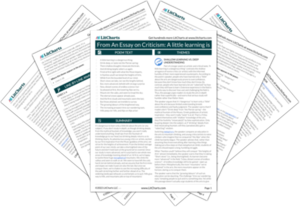
Alexander Pope's "An Essay on Criticism" seeks to lay down rules of good taste in poetry criticism, and in poetry itself. Structured as an essay in rhyming verse, it offers advice to the aspiring critic while satirizing amateurish criticism and poetry. The famous passage beginning "A little learning is a dangerous thing" advises would-be critics to learn their field in depth, warning that the arts demand much longer and more arduous study than beginners expect. The passage can also be read as a warning against shallow learning in general. Published in 1711, when Alexander Pope was just 23, the "Essay" brought its author fame and notoriety while he was still a young poet himself.
- Read the full text of “From An Essay on Criticism: A little learning is a dangerous thing”
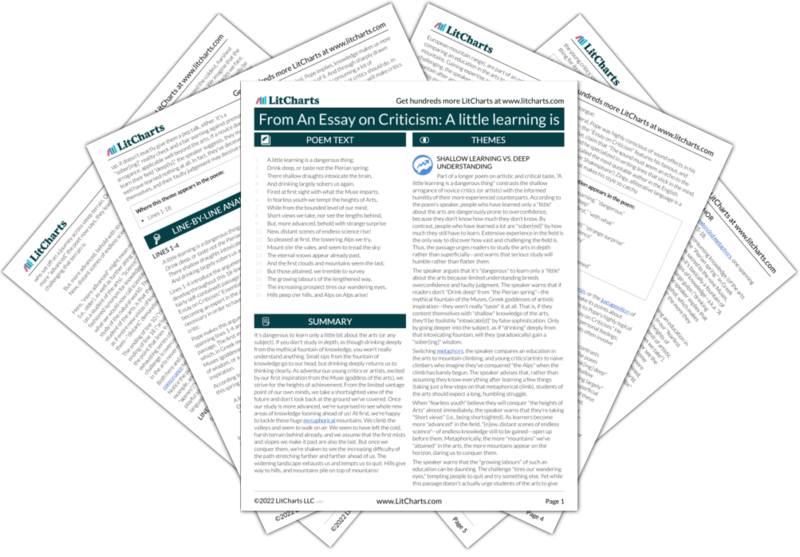
The Full Text of “From An Essay on Criticism: A little learning is a dangerous thing”
1 A little learning is a dangerous thing;
2 Drink deep, or taste not the Pierian spring:
3 There shallow draughts intoxicate the brain,
4 And drinking largely sobers us again.
5 Fired at first sight with what the Muse imparts,
6 In fearless youth we tempt the heights of Arts,
7 While from the bounded level of our mind,
8 Short views we take, nor see the lengths behind,
9 But, more advanced, behold with strange surprise
10 New, distant scenes of endless science rise!
11 So pleased at first, the towering Alps we try,
12 Mount o'er the vales, and seem to tread the sky;
13 The eternal snows appear already past,
14 And the first clouds and mountains seem the last;
15 But those attained, we tremble to survey
16 The growing labours of the lengthened way,
17 The increasing prospect tires our wandering eyes,
18 Hills peep o'er hills, and Alps on Alps arise!
“From An Essay on Criticism: A little learning is a dangerous thing” Summary
“from an essay on criticism: a little learning is a dangerous thing” themes.

Shallow Learning vs. Deep Understanding
- See where this theme is active in the poem.
Line-by-Line Explanation & Analysis of “From An Essay on Criticism: A little learning is a dangerous thing”
A little learning is a dangerous thing; Drink deep, or taste not the Pierian spring: There shallow draughts intoxicate the brain, And drinking largely sobers us again.

Fired at first sight with what the Muse imparts, In fearless youth we tempt the heights of Arts, While from the bounded level of our mind, Short views we take, nor see the lengths behind,
But, more advanced, behold with strange surprise New, distant scenes of endless science rise!
Lines 11-14
So pleased at first, the towering Alps we try, Mount o'er the vales, and seem to tread the sky; The eternal snows appear already past, And the first clouds and mountains seem the last;
Lines 15-18
But those attained, we tremble to survey The growing labours of the lengthened way, The increasing prospect tires our wandering eyes, Hills peep o'er hills, and Alps on Alps arise!
“From An Essay on Criticism: A little learning is a dangerous thing” Symbols

The Mountains/Alps
- See where this symbol appears in the poem.
“From An Essay on Criticism: A little learning is a dangerous thing” Poetic Devices & Figurative Language
Alliteration.
- See where this poetic device appears in the poem.
Extended Metaphor
“from an essay on criticism: a little learning is a dangerous thing” vocabulary.
Select any word below to get its definition in the context of the poem. The words are listed in the order in which they appear in the poem.
- A little learning
- Pierian spring
- Bounded level
- Short views
- The lengthened way
- See where this vocabulary word appears in the poem.
Form, Meter, & Rhyme Scheme of “From An Essay on Criticism: A little learning is a dangerous thing”
Rhyme scheme, “from an essay on criticism: a little learning is a dangerous thing” speaker, “from an essay on criticism: a little learning is a dangerous thing” setting, literary and historical context of “from an essay on criticism: a little learning is a dangerous thing”, more “from an essay on criticism: a little learning is a dangerous thing” resources, external resources.
The Poem Aloud — Listen to an audiobook of Pope's "Essay on Criticism" (the "A little learning" passage starts at 12:57).
The Poet's Life — Read a biography of Alexander Pope at the Poetry Foundation.
"Alexander Pope: Rediscovering a Genius" — Watch a BBC documentary on Alexander Pope.
More on Pope's Life — A summary of Pope's life and work at Poets.org.
Pope at the British Library — More resources and articles on the poet.
LitCharts on Other Poems by Alexander Pope
Ode on Solitude
Ask LitCharts AI: The answer to your questions


Literary Theory and Criticism
Home › Literature › Literary Criticism of Alexander Pope
Literary Criticism of Alexander Pope
By NASRULLAH MAMBROL on December 6, 2017 • ( 4 )
An Essay on Criticism , published anonymously by Alexander Pope (1688–1744) in 1711, is perhaps the clearest statement of neoclassical principles in any language. In its broad outlines, it expresses a worldview which synthesizes elements of a Roman Catholic outlook with classical aesthetic principles and with deism. That Pope was born a Roman Catholic affected not only his verse and critical principles but also his life. In the year of his birth occurred the so-called “Glorious Revolution”: England’s Catholic monarch James II was displaced by the Protestant King William III of Orange, and the prevailing anti-Catholic laws constrained many areas of Pope’s life; he could not obtain a university education, hold public or political office, or even reside in London. Pope’s family, in fact, moved to a small farm in Windsor Forest, a neighbourhood occupied by other Catholic families of the gentry, and he later moved with his mother to Twickenham. However, Pope was privately taught and moved in an elite circle of London writers which included the dramatists Wycherley and Congreve, the poet Granville, the critic William Walsh, as well as the writers Addison and Steele, and the deistic politician Bolingbroke. Pope’s personal life was also afflicted by disease: he was a hunchback, only four and a half feet tall, and suffered from tuberculosis. He was in constant need of his maid to dress and care for him. Notwithstanding such social and personal obstacles, Pope produced some of the finest verse ever written. His most renowned publications include several mock-heroic poems such as The Rape of the Lock (1712; 1714), and The Dunciad (1728). His philosophical poem An Essay on Man (1733–1734) was a scathing attack on human arrogance or pride in failing to observe the due limits of human reason, in questioning divine authority and seeking to be self-reliant on the basis of rationality and science. Even An Essay on Criticism is written in verse, following the tradition of Horace’s Ars poetica , and interestingly, much of the philosophical substance of An Essay on Man is already formulated in this earlier poem, in its application to literature and criticism. While An Essay on Man identifies the chief fault of humankind as the original sin of “pride” and espouses an ethic based on an ordered and hierarchical universe, it nonetheless depicts this order in terms of Newtonian mechanism and expresses a broadly deistic vision.
The same contradictions permeate the Essay on Criticism , which effects an eclectic mixture of a Roman Catholic vision premised on the (negative) significance of pride, a humanistic secularism perhaps influenced by Erasmus, a stylistic neoclassicism with roots in the rhetorical tradition from Aristotle, Horace, Longinus, and modern disciples such as Boileau, and a modernity in the wake of figures such as Bacon, Hobbes, and Locke. Some critics have argued that the resulting conglomeration is inharmonious; in fairness to Pope, we might cite one of his portraits of the satirist:
Verse-man or Prose-man, term me which you will, Papist or Protestant, or both between, Like good Erasmus in an honest Mean, In moderation placing all my glory, While Tories call me Whig, and Whigs a Tory. ( Satire II.i)
Clearly, labels can oversimplify: yet it is beyond doubt that, on balance, Pope’s overall vision was conservative and retrospective. He is essentially calling for a return to the past, a return to classical values, and the various secularizing movements that he bemoans are already overwhelming the view of nature, man, and God that he is attempting to redeem.
Indeed, Pope’s poem has been variously called a study and defense of “nature” and of “wit.” The word “nature” is used twenty-one times in the poem; the word “wit” forty-six times. Given the numerous meanings accumulated in the word “nature” as it has passed through various traditions, Pope’s call for a “return to nature” is complex, and he exploits the multiple significance of the term to generate within his poem a comprehensive redefinition of it. Among other things, nature can refer, on a cosmic level, to the providential order of the world and the universe, an order which is hierarchical, in which each entity has its proper assigned place. In An Essay on Man Pope expounds the “Great Chain of Being,” ranging from God and the angels through humans and the lower animals to plants and inanimate objects. Nature can also refer to what is normal, central, and universal in human experience, encompassing the spheres of morality and knowledge, the rules of proper moral conduct as well as the archetypal patterns of human reason.
The word “wit” in Pope’s time also had a variety of meanings: it could refer in general to intelligence and intellectual acuity; it also meant “wit” in the modern sense of cleverness, as expressed for example in the ability to produce a concise and poignant figure of speech or pun; more specifically, it might designate a capacity to discern similarities between different entities and to perceive the hidden relationships underlying the appearances of things. In fact, during the late seventeenth and early eighteenth centuries, “wit” was the subject of a broad and heated debate. Various parties contested the right to define it and to invest it with moral significance. A number of writers such as Nicolas Malebranche and Joseph Addison , and philosophers such as John Locke, argued that wit was a negative quality, associated with a corrupting imagination, distortion of truth, profanity, and skepticism, a quality opposed to “judgment,” which was a faculty of clear and truthful insight. Literature generally had come to be associated with wit and had been under attack from the Puritans also, who saw it as morally defective and corrupting. On the other side, writers such as John Dryden and William Wycherley, as well as moralists such as the third earl of Shaftesbury, defended the use and freedom of wit. Pope’s notions of wit were worked out in the context of this debate, and his redefinition of “true” wit in Essay on Criticism was a means not only of upholding the proper uses of wit but also of defending literature itself, wit being a mode of knowing or apprehension unique to literature.1

While much of Pope’s essay bemoans the abyss into which current literary criticism has fallen, he does not by any means denounce the practice of criticism itself. While he cautions that the best poets make the best critics (“Let such teach others who themselves excell,” l. 15), and while he recognizes that some critics are failed poets (l. 105), he points out that both the best poetry and the best criticism are divinely inspired:
Both must alike from Heav’n derive their Light, These born to Judge, as well as those to Write. (ll. 13–14)
By the word “judge,” Pope refers to the critic, drawing on the meaning of the ancient Greek word krites . Pope sees the endeavor of criticism as a noble one, provided it abides by Horace’s advice for the poet:
But you who seek to give and merit Fame, And justly bear a Critick’s noble Name, Be sure your self and your own Reach to know, How far your Genius , Taste , and Learning go; Launch not beyond your Depth . . . (ll. 46–50)
Indeed, Pope suggests in many portions of the Essay that criticism itself is an art and must be governed by the same rules that apply to literature itself. However, there are a number of precepts he advances as specific to criticism. Apart from knowing his own capacities, the critic must be conversant with every aspect of the author whom he is examining, including the author’s
. . . Fable, Subject, Scope in ev’ry Page, Religion, Country, Genius of his Age: Without all these at once before your Eyes, Cavil you may, but never Criticize . (ll. 120–123)
Perhaps ironically, Pope’s advice here seems modern insofar as he calls for a knowledge of all aspects of the author’s work, including not only its subject matter and artistic lineage but also its religious, national, and intellectual contexts. He is less modern in insisting that the critic base his interpretation on the author’s intention: “In ev’ry Work regard the Writer’s End , / Since none can compass more than they Intend ” (ll. 233–234, 255–256).
Pope specifies two further guidelines for the critic. The first is to recognize the overall unity of a work, and thereby to avoid falling into partial assessments based on the author’s use of poetic conceits, ornamented language, and meters, as well as those which are biased toward either archaic or modern styles or based on the reputations of given writers. Finally, a critic needs to possess a moral sensibility, as well as a sense of balance and proportion, as indicated in these lines: “Nor in the Critick let the Man be lost! / Good-Nature and Good-Sense must ever join” (ll. 523–525). In the interests of good nature and good sense, Pope urges the critic to adopt not only habits of self-criticism and integrity (“with pleasure own your Errors past, / And make each Day a Critick on the last,” ll. 570–571), but also modesty and caution. To be truthful is not enough, he warns; truth must be accompanied by “Good Breeding” or else it will lose its effect (ll. 572–576). And mere bookish knowledge will often express itself in showiness, disdain, and an overactive tongue: “ Fools rush in where Angels fear to tread. / Distrustful Sense with modest Caution speaks” (ll. 625–626). Pope ends his advice with this summary of the ideal critic:
But where’s the Man, who Counsel can bestow, Still pleas’d to teach , and yet not proud to know ? Unbiass’d, or by Favour or by Spite ; Not dully prepossest , nor blindly right ; Tho learn’d, well-bred; and tho’ well-bred, sincere; . . . Blest with a Taste exact, yet unconfin’d; A Knowledge both of Books and Humankind ; Gen’rous Converse ; a Soul exempt from Pride ; And Love to Praise , with Reason on his Side? (ll. 631–642)
As we read through this synthesis of the qualities of a good critic, it becomes clear that they are primarily attributes of humanity or moral sensibility rather than aesthetic qualities. Indeed, the only specifically aesthetic quality mentioned here is “taste.” The remaining virtues might be said to have a theological ground, resting on the ability to overcome pride. Pope effectively transposes the language of theology (“soul,” “pride”) to aesthetics. It is the disposition of humility – an aesthetic humility, if you will – which enables the critic to avoid the arrogant parading of his learning, to avoid falling into bias, and to open himself up to a knowledge of humanity. The “reason” to which Pope appeals is not the individualistic and secular “reason” of the Enlightenment philosophers; it is “reason” as understood by Aquinas and many medieval thinkers, reason as a universal archetype in human nature, constrained by a theological framework. Reason in this sense is a corollary of humility: it is humility which allows the critic to rise above egotistical dogmatism and thereby to be rational and impartial, and aware of his own limitations, in his striving after truth. Knowledge itself, then, has a moral basis in good breeding; and underlying good breeding is the still profounder quality of sincerity, which we might understand here as a disposition commensurate with humility: a genuine desire to pursue truth or true judgment, unclouded by personal ambitions and subjective prejudices. Interestingly, the entire summary takes the form not of an assertion but of an extended question, implying that what is proposed here is an ideal type, to which no contemporary critic can answer.
Pope’s specific advice to the critic is grounded on virtues whose application extends far beyond literary criticism, into the realms of morality, theology, and art itself. It is something of an irony that the main part of his Essay on Criticism is devoted not specifically to criticism but to art itself, of which poetry and criticism are regarded as branches. In other words, Pope sees criticism itself as an art. Hence most of the guidance he offers, couched in the language of nature and wit, applies equally to poetry and criticism. Not only this, but there are several passages which suggest that criticism must be a part of the creative process, that poets themselves must possess critical faculties in order to execute their craft in a self-conscious and controlled manner. Hence there is a large overlap between these domains, between the artistic elements within criticism and the critical elements necessary to art. While Pope’s central piece of advice to both poet and critic is to “follow Nature,” his elaboration of this concept enlists the semantic service of both wit and judgment, establishing a close connection – sometimes indeed an identity – between all three terms; wit might be correlated with literature or poetry; and judgment with criticism. Because of the overlapping natures of poetry and criticism, however, both wit and judgment will be required in each of these pursuits.
Before inviting the poet and critic to follow nature, Pope is careful to explain one of the central functions of nature:
Nature to all things fix’d the Limits fit, And wisely curb’d proud Man’s pretending Wit; . . . One Science only will one Genius fit; So vast is Art, so narrow Human Wit . . . (ll. 52–53, 60–61)
Hence, even before he launches into any discussion of aesthetics, Pope designates human wit generally as an instrument of pride, as intrinsically liable to abuse. In the scheme of nature, however, man’s wit is puny and occupies an apportioned place. It is in this context that Pope proclaims his famous maxim:
First follow NATURE, and your Judgment frame By her just Standard, which is still the same: Unerring Nature , still divinely bright, Once clear , unchang’d , and Universal Light, Life, Force, and Beauty, must to all impart, At once the Source , and End , and Test of Art. (ll. 68–73)
The features attributed to nature include permanence or timelessness and universality. Ultimately, nature is a force which expresses the power of the divine, not in the later Romantic sense of a divine spirit pervading the physical appearances of nature but in the medieval sense of expressing the order, harmony, and beauty of God’s creation. As such, nature provides the eternal and archetypal standard against which art must be measured: the implication in the lines above is not that art imitates nature but that it derives its inspiration, purpose, and aesthetic criteria from nature.
Pope’s view of nature as furnishing the universal archetypes for art leads him to condemn excessive individualism, which he sees as an abuse of wit. Wit is abused when it contravenes sound judgment: “For Wit and Judgment often are at strife, Tho’ meant each other’s Aid, like Man and Wife ” (ll. 80–83). However, Pope does not believe, like many medieval rhetoricians, that poetry is an entirely rational process that can be methodically worked out in advance. In poetry, as in music, he points out, are “ nameless Graces which no Methods teach” (l. 144). Indeed, geniuses can sometimes transgress the boundaries of judgment and their very transgression or license becomes a rule for art:
Great Wits sometimes may gloriously offend , And rise to Faults true Criticks dare not mend ; From vulgar Bounds with brave Disorder part, And snatch a Grace beyond the Reach of Art, Which, without passing thro’ the Judgment , gains The Heart , and all its End at once attains. (ll. 152–157)
If Kant had been a poet, he might have expressed his central aesthetic ideas in this very way. Kant also believed that a genius lays down the rules for art, that those rules cannot be prescribed in advance, and that aesthetic judgment bypasses the conventional concepts of our understanding. Indeed, Kant laid the groundwork for many Romantic aesthetics, and if Pope’s passage above were taken in isolation, it might well be read as a formulation of Romantic aesthetic doctrine. It seems to assert the primacy of wit over judgment, of art over criticism, viewing art as inspired and as transcending the norms of conventional thinking in its direct appeal to the “heart.” The critic’s task here is to recognize the superiority of great wit. While Pope’s passage does indeed in these respects stride beyond many medieval and Renaissance aesthetics, it must of course be read in its own poetic context: he immediately warns contemporary writers not to abuse such a license of wit: “ Moderns , beware! Or if you must offend / Against the Precept , ne’er transgress its End ” (ll. 163–164). In fact, the passage cited above is more than counterbalanced by Pope’s subsequent insistence that modern writers not rely on their own insights. Modern writers should draw on the common store of poetic wisdom, established by the ancients, and acknowledged by “ Universal Praise” (l. 190).
Pope’s exploration of wit aligns it with the central classical virtues, which are themselves equated with nature. His initial definition of true wit identifies it as an expression of nature: “ True Wit is Nature to Advantage drest, / What oft was Thought , but ne’er so well Exprest ” (ll. 297–298). Pope subsequently says that expression is the “ Dress of Thought ,” and that “true expression” throws light on objects without altering them (ll. 315–318). The lines above are a concentrated expression of Pope’s classicism. If wit is the “dress” of nature, it will express nature without altering it. The poet’s task here is twofold: not only to find the expression that will most truly convey nature, but also first to ensure that the substance that he is expressing is indeed a “natural” insight or thought. What the poet must express is a universal truth which we will instantly recognize as such. This classical commitment to the expression of objective and universal truth is echoed a number of times through Pope’s text. For example, he admonishes both poet and critic: “Regard not then if Wit be Old or New , / But blame the False , and value still the True ” (ll. 406–407).
A second classical ideal urged in the passage above is that of organic unity and wholeness. The expression or style, Pope insists, must be suited to the subject matter and meaning: “The Sound must seem an Eccho to the Sense ” (l. 365). Elsewhere in the Essay , Pope stresses the importance, for both poet and critic, of considering a work of art in its totality, with all the parts given their due proportion and place (ll. 173–174). Once again, wit and nature become almost interchangeable in Pope’s text. An essential component underlying such unity and proportion is the classical virtue of moderation. Pope advises both poet and critic to follow the Aristotelian ethical maxim: “Avoid Extreams. ” Those who go to excess in any direction display “ Great Pride , or Little Sense ” (ll. 384–387). And once again, the ability to overcome pride – humility – is implicitly associated with what Pope calls “right Reason” (l. 211).
Indeed, the central passage in the Essay on Criticism , as in the later Essay on Man , views all of the major faults as stemming from pride: Of all the Causes which conspire to blind
Man’s erring Judgment, and misguide the Mind, . . . Is Pride , the never-failing Vice of Fools . (ll. 201–204)
It is pride which leads critics and poets alike to overlook universal truths in favor of subjective whims; pride which causes them to value particular parts instead of the whole; pride which disables them from achieving a harmony of wit and judgment; and pride which underlies their excesses and biases. And, as in the Essay on Man , Pope associates pride with individualism, with excessive reliance on one’s own judgment and failure to observe the laws laid down by nature and by the classical tradition.

Pope’s final strategy in the Essay is to equate the classical literary and critical traditions with nature, and to sketch a redefined outline of literary history from classical times to his own era. Pope insists that the rules of nature were merely discovered, not invented, by the ancients: “Those Rules of old discover’d , not devis’d , / Are Nature still, but Nature Methodiz’d ” (ll. 88–89). He looks back to a time in ancient Greece when criticism admirably performed its function as “the Muse’s Handmaid,” and facilitated a rational admiration of poetry. But criticism later declined from this high status, and those who “cou’d not win the Mistress, woo’d the Maid” (ll. 100–105). Instead of aiding the appreciation of poetry, critics, perhaps in consequence of their own failure to master the poetic art, allowed the art of criticism to degenerate into irrational attacks on poets. Pope’s advice, for both critic and poet, is clear: “Learn hence for Ancient Rules a just Esteem; / To copy Nature is to copy Them ” (ll. 139–140). Before offering his sketch of literary-critical history, Pope laments the passing of the “Golden Age” of letters (l. 478), and portrays the depths to which literature and criticism have sunk in the degenerate times of recent history:
In the fat Age of Pleasure, Wealth, and Ease, Sprung the rank Weed, and thriv’d with large Increase; When Love was all an easie Monarch’s Care; Seldom at Council , never in a War . . . . . . The following Licence of a Foreign Reign Did all the Dregs of bold Socinus drain; Then Unbelieving Priests reform’d the Nation, And taught more Pleasant Methods of Salvation; Where Heav’ns Free Subjects might their Rights dispute, Lest God himself shou’d seem too Absolute . . . . Encourag’d thus, Wit’s Titans brav’d the Skies . . . (ll. 534–537, 544–552)
Pope cites two historical circumstances here. By “easie Monarch” he refers to the reign of Charles II (1660–1685), whose father King Charles I had engaged in a war with the English Parliament, provoked by his excessive authoritarianism. Having lost the war, Charles I was beheaded in 1649, and England was ruled by Parliament, under the leadership of the Puritan Oliver Cromwell. Shortly after Cromwell’s death, a newly elected Parliament, reflecting the nation’s unease with the era of puritanical rule, invited Prince Charles to take the throne of England as Charles II. The new king, as Pope indicates, had a reputation for easy living, lax morality, and laziness. The reigns of Charles II and his brother James II (1685–1688) are known as the period of the Restoration (of the monarchy). Both kings were strongly pro-Catholic and aroused considerable opposition, giving rise to the second historical event to which Pope refers above, the Glorious Revolution of 1688–1689. In 1688 the Protestants Prince William of Orange and his wife Mary (daughter of James II) were secretly invited to occupy the throne of England. Under their rule, which Pope refers to as the “Licence of a Foreign Reign,” a Toleration Act was passed which granted religious freedom to all Christians except Catholics and Unitarians. Also enacted into law was a Bill of Rights which granted English citizens the right to trial by jury and various other rights.
Hence, as far as understanding Pope’s passage is concerned, there were two broad consequences of the Glorious Revolution. First, various impulses of the earlier Protestant Reformation, such as religious individualism and amendment of the doctrines of the Church of England, were reconfirmed. Pope refers to Faustus Socinus (1539 – 1604), who produced unorthodox doctrines denying Christ’s divinity, as being of the same theological tenor as the “Unbelieving Priests,” the Protestants, who reformed the nation. The second, even more significant, consequence of the revolution was the complete triumph of Parliament over the king, the monarchy’s powers being permanently restricted. Protestantism in general had been associated with attempts to oppose absolute government; clearly, Pope’s sympathies did not lie with these movements toward democracy. Significantly, his passage above wittily intertwines these two implications of the Glorious Revolution: he speaks sarcastically of “Heav’ns Free Subjects” disputing their rights not only with temporal power but also with God himself. Such is the social background, in Pope’s estimation, of the modern decline of poetry and criticism: religious and political individualism, the craving for freedom, and the concomitant rejection of authority and tradition, underlie these same vices in the sphere of letters, vices which amount to pride and the contravention of nature.
Pope now furnishes an even broader historical context for these modern ills. He traces the genealogy of “nature,” as embodied in classical authors, to Aristotle. Poets who accepted Aristotle’s rules of poetic composition, he suggests, learned that “Who conquer’d Nature , shou’d preside oe’r Wit ” (l. 652). In other words, the true and false uses of wit must be judged by those who have learned the rules of nature. Likewise, Horace, the next critic in the tradition Pope cites, was “Supream in Judgment, as in Wit” and “his Precepts teach but what his Works inspire” (ll. 657, 660). Other classical critics praised by Pope are Dionysius of Halicarnassus (ca. 30–7 bc) and the Roman authors of the first century Petronius and Quintilian, as well as Longinus, the first-century Greek author of On the Sublime . After these writers, who represent the classical tradition, Pope says, a dark age ensued with the collapse of the western Roman Empire at the hands of the Vandals and Goths, an age governed by “tyranny” and “superstition,” an age where “Much was Believ’d , but little understood ” (ll. 686– 689). What is interesting here is that Pope sees the medieval era as a continuation of the so-called Dark Ages. He refers to the onset of medieval theology as a “ second Deluge” whereby “the Monks finish’d what the Goths begun” (ll. 691–692). Hence, even though he was himself a Catholic and placed great stress on the original sin of pride, Pope seems to reject the traditions of Catholic theology as belonging to an age of superstition and irrational belief. He is writing here as a descendent of Renaissance thinkers who saw themselves as the true heirs of the classical authors and the medieval period as an aberration. What is even more striking is Pope’s subsequent praise of the Renaissance humanist thinker Desiderius Erasmus, who “drove those Holy Vandals off the Stage” (ll. 693–694). Erasmus, like Pope, had a love for the classics grounded on rationality and tolerance. He rejected ecclesiastical Christianity, theological dogmatism, and superstition in favor of a religion of simple and reasonable piety. His writings helped pave the way for the Protestant Reformation, though he himself was skeptical of the bigotry he saw on both Protestant and Catholic sides.
Pope’s implicit allegiance to Erasmus (and in part to contemporary figures such as Bolingbroke) points in the direction of a broad deism which, on the one hand, accommodates the significance of pride in secular rather than theological contexts, and, on the other hand, accommodates reason within its appropriate limits. His historical survey continues with praises of the “Golden Days” of Renaissance artistic accomplishments, and suggests that the arts and criticism thereafter flourished chiefly in Europe, especially in France, which produced the critic and poet Nicolas Boileau. Boileau was a classicist influenced greatly by Horace. Given Boileau’s own impact on Pope’s critical thought, we can see that Pope now begins to set the stage for his own entry into the history of criticism. While he notes that the English, “Fierce for the Liberties of Wit ,” were generally impervious to foreign literary influences, he observes that a handful of English writers were more sound: they sided with “the juster Ancient Cause , / And here restor’d Wit’s Fundamental Laws ” (ll. 721–722). The writers Pope now cites were either known to him or his tutors. He names the earl of Roscommon, who was acquainted with classical wit; William Walsh, his mentor; and finally himself, as offering “humble” tribute to his dead tutor (ll. 725–733). All in all, Pope’s strategy here is remarkable: in retracing the lineage of good criticism, as based on nature and the true use of wit, he traces his own lineage as both poet and critic, thereby both redefining or reaffirming the true critical tradition and marking his own entry into it. Pope presents himself as abiding by and exemplifying the critical virtues he has hitherto commended.
1. Edward Niles Hooker’s “Pope on Wit: The Essay on Criticism ,” in The Seventeenth Century: Studies in the History of English Thought and Literature from Bacon to Pope , R. F. Jones et al. (Stanford: Stanford University Press, 1951), pp. 225–246.
Share this:
Categories: Literature
Tags: Alexander Pope , An Essay on Criticism , An Essay on Man , Dionysius of Halicarnassus , Faustus Socinus , Literary Criticism , Literary Theory , Nicolas Malebranche , Poetry , The Dunciad , The Rape of the Lock
Related Articles

- Literary Criticism of Nicolas Boileau-Despréaux – Literary Theory and Criticism Notes
- Literary Criticism of Giovanni Boccaccio – Literary Theory and Criticism Notes
- Literary Criticism of Joseph Addison – Literary Theory and Criticism Notes
- Key Theories of Wimsatt and Beardsley – Literary Theory and Criticism Notes
Leave a Reply Cancel reply
You must be logged in to post a comment.
British Literature Wiki

An Essay on Criticism
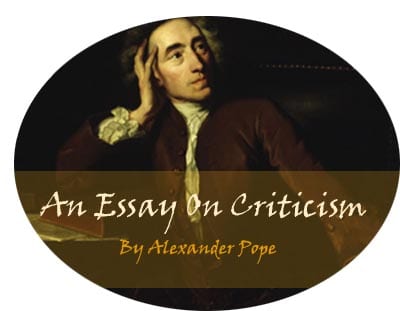
Alexander Pope wrote An Essay on Criticism shortly after turning 21 years old in 1711. While remaining the speaker within his own poem Pope is able to present his true viewpoints on writing styles both as they are and how he feels they should be. While his poetic essay, written in heroic couplets, may not have obtained the same status as others of his time, it was certainly not because his writing was inferior (Bate). In fact, the broad background and comprehensive coverage within Pope’s work made it it one of the most influential critical essays yet to be written (Bate). It appears that through his writing Pope was reaching out not to the average reader, but instead to those who intend to be writers themselves as he represents himself as a critical perfectionist insisting on particular styles. Overall, his essay appears to best be understood by breaking it into three parts.
The scholar Walter Jackson Bate has explained the structure of the essay in the following way:
I. General qualities needed by the critic (1-200):
1. Awareness of his own limitations (46-67). 2. Knowledge of Nature in its general forms (68-87).
- Nature defined (70-79).
- Need of both wit and judgment to conceive it (80-87).
3. Imitation of the Ancients, and the use of rules (88-200).
- Value of ancient poetry and criticism as models (88-103).
- Censure of slavish imitation and codified rules (104-117).
- Need to study the general aims and qualities of the Ancients (118-140).
- Exceptions to the rules (141-168).
II. Particular laws for the critic (201-559): Digression on the need for humility (201-232):
1. Consider the work as a total unit (233-252). 2. Seek the author’s aim (253-266). 3. Examples of false critics who mistake the part for the whole (267-383).
- The pedant who forgets the end and judges by rules (267-288).
- The critic who judges by imagery and metaphor alone (289-304).
- The rhetorician who judges by the pomp and colour of the diction (305-336).
- Critics who judge by versification only (337-343).
Pope’s digression to exemplify “representative meter” (344-383). 4. Need for tolerance and for aloofness from extremes of fashion and personal mood (384-559).The fashionable critic: the cults, as ends in themselves, of the foreign (398-405), the new (406-423), and the esoteric (424-451).
- Personal subjectivity and its pitfalls (452-559).
III. The ideal character of the critic (560-744):
1. Qualities needed: integrity (562-565), modesty (566-571), tact (572-577), courage (578-583). 2. Their opposites (584-630). 3. Concluding eulogy of ancient critics as models (643-744).
To uncover the deeper meaning of An Essay on Criticism click here
Back to Alexander Pope
- Project Gutenberg
- 73,433 free eBooks
- 15 by Alexander Pope
An Essay on Criticism by Alexander Pope
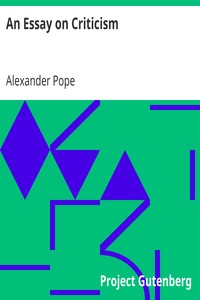
Read now or download (free!)
Similar books, about this ebook.
- Privacy policy
- About Project Gutenberg
- Terms of Use
- Contact Information

François Voltaire
- Literature Notes
- Alexander Pope's Essay on Man
- Book Summary
- Character List
- Summary and Analysis
- Chapters II-III
- Chapters IV-VI
- Chapters VII-X
- Chapters XI-XII
- Chapters XIII-XVI
- Chapters XVII-XVIII
- Chapter IXX
- Chapters XX-XXIII
- Chapters XXIV-XXVI
- Chapters XXVII-XXX
- Francois Voltaire Biography
- Critical Essays
- The Philosophy of Leibnitz
- Poème Sur Le Désastre De Lisoonne
- Other Sources of Influence
- Structure and Style
- Satire and Irony
- Essay Questions
- Cite this Literature Note
Critical Essays Alexander Pope's Essay on Man
The work that more than any other popularized the optimistic philosophy, not only in England but throughout Europe, was Alexander Pope's Essay on Man (1733-34), a rationalistic effort to justify the ways of God to man philosophically. As has been stated in the introduction, Voltaire had become well acquainted with the English poet during his stay of more than two years in England, and the two had corresponded with each other with a fair degree of regularity when Voltaire returned to the Continent.
Voltaire could have been called a fervent admirer of Pope. He hailed the Essay of Criticism as superior to Horace, and he described the Rape of the Lock as better than Lutrin. When the Essay on Man was published, Voltaire sent a copy to the Norman abbot Du Resnol and may possibly have helped the abbot prepare the first French translation, which was so well received. The very title of his Discours en vers sur l'homme (1738) indicates the extent Voltaire was influenced by Pope. It has been pointed out that at times, he does little more than echo the same thoughts expressed by the English poet. Even as late as 1756, the year in which he published his poem on the destruction of Lisbon, he lauded the author of Essay on Man. In the edition of Lettres philosophiques published in that year, he wrote: "The Essay on Man appears to me to be the most beautiful didactic poem, the most useful, the most sublime that has ever been composed in any language." Perhaps this is no more than another illustration of how Voltaire could vacillate in his attitude as he struggled with the problems posed by the optimistic philosophy in its relation to actual experience. For in the Lisbon poem and in Candide , he picked up Pope's recurring phrase "Whatever is, is right" and made mockery of it: "Tout est bien" in a world filled with misery!
Pope denied that he was indebted to Leibnitz for the ideas that inform his poem, and his word may be accepted. Those ideas were first set forth in England by Anthony Ashley Cowper, Earl of Shaftesbury (1671-1731). They pervade all his works but especially the Moralist. Indeed, several lines in the Essay on Man, particularly in the first Epistle, are simply statements from the Moralist done in verse. Although the question is unsettled and probably will remain so, it is generally believed that Pope was indoctrinated by having read the letters that were prepared for him by Bolingbroke and that provided an exegesis of Shaftesbury's philosophy. The main tenet of this system of natural theology was that one God, all-wise and all-merciful, governed the world providentially for the best. Most important for Shaftesbury was the principle of Harmony and Balance, which he based not on reason but on the general ground of good taste. Believing that God's most characteristic attribute was benevolence, Shaftesbury provided an emphatic endorsement of providentialism.
Following are the major ideas in Essay on Man: (1) a God of infinite wisdom exists; (2) He created a world that is the best of all possible ones; (3) the plenum, or all-embracing whole of the universe, is real and hierarchical; (4) authentic good is that of the whole, not of isolated parts; (5) self-love and social love both motivate humans' conduct; (6) virtue is attainable; (7) "One truth is clear, WHATEVER IS, IS RIGHT." Partial evil, according to Pope, contributes to the universal good. "God sends not ill, if rightly understood." According to this principle, vices, themselves to be deplored, may lead to virtues. For example, motivated by envy, a person may develop courage and wish to emulate the accomplishments of another; and the avaricious person may attain the virtue of prudence. One can easily understand why, from the beginning, many felt that Pope had depended on Leibnitz.
Previous The Philosophy of Leibnitz
Next Poème Sur Le Désastre De Lisoonne
An Essay on Man
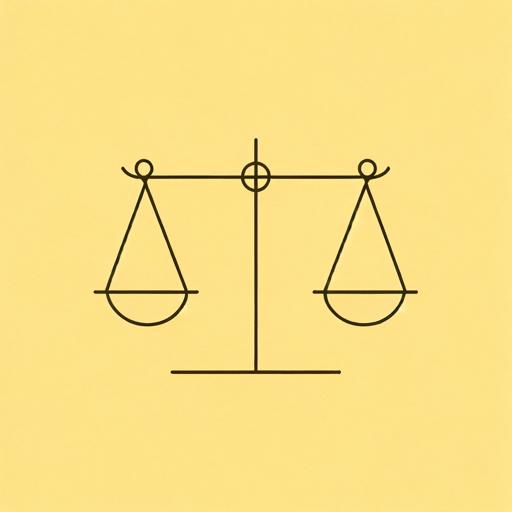
30 pages • 1 hour read
A modern alternative to SparkNotes and CliffsNotes, SuperSummary offers high-quality Study Guides with detailed chapter summaries and analysis of major themes, characters, and more.
Epistle Summaries & Analyses
Symbols & Motifs
Literary Devices
Further Reading & Resources
Discussion Questions
Summary and Study Guide
Alexander Pope is the author of “An Essay on Man,” published in 1734. Pope was an English poet of the Augustan Age, the literary era in the first half of the 18th century in England (1700-1740s). Neoclassicism, a literary movement in which writers and poets sought inspiration from the works of Virgil, Ovid, and Horace, influenced the poem. Writing in heroic couplets, Pope explores the connection between God, human nature , and society. The poem is philosophical and discusses order, reason, and balance, themes that dominated the era. Pope dedicated the poem to Henry St. John, one of his close friends and a famous Tory politician.
This is Pope’s final long poem. It was intended to be the first part of a book-length poem on his philosophy of the world, but Pope did not live to complete the book. Pope initially published “An Essay on Man” anonymously, as he had a fractious relationship with critics and wanted to see how people would respond to the work if unaware that he had written it. The work was praised highly when it was published, and is still esteemed as one of the most elegant didactic poems ever composed.
Get access to this full Study Guide and much more!
- 7,550+ In-Depth Study Guides
- 4,850+ Quick-Read Plot Summaries
- Downloadable PDFs
Poet Biography
Alexander Pope was born in 1688 in London, England. His father was a wealthy merchant, but because he was Catholic and the Church of England was extremely anti-Catholic, his family could not live within ten miles of London, and Pope could not receive a formal education. As a result, Pope grew up near Windsor Forest and was self-taught. At the age of 12, he contracted spinal tuberculosis, which resulted in lifelong debilitating pain. He grew to be four and a half feet tall and was dependent on others.
The SuperSummary difference
- 8x more resources than SparkNotes and CliffsNotes combined
- Study Guides you won ' t find anywhere else
- 100+ new titles every month
Despite these early challenges, Pope’s poetic talent enabled him to attain a higher social status. He began publishing poetry at the age of 16. He translated Homer’s The Iliad and The Odyssey , as well as the works of Shakespeare, and sold the translations for a subscription fee. From the profits of these translations, Pope purchased a grand mansion and large plot of land in Twickenham in 1719. Pope is famous for being the first poet able to support himself entirely on his writing. He valued his friendships, which were with some of the greatest minds of his time, including Jonathan Swift, the famous satirist and author of A Modest Proposal . Pope also had many enemies due to his biting wit and talent for mocking the conventions of his era. For this, he was called “The Wasp of Twickenham.” His Essay on Criticism (1711) expressed his views on criticism and poetry. His mock-epic poem, The Rape of the Lock (1714), was one of his most famous satirical poems. His satire , The Dunciad (1728) lambasted the culture and literature of his day.
He died in 1744 at the age of 56 from edema and asthma. He never married and had no children. Pope is considered one of the greatest English poets of the 18th century and his style defined the Augustan age of poetry. After Shakespeare, he is the second most quoted writer in the Oxford Dictionary of Quotations .
Pope, Alexander. “ An Essay on Man .” 2007. Project Gutenberg .

Don't Miss Out!
Access Study Guide Now
Related Titles
By Alexander Pope
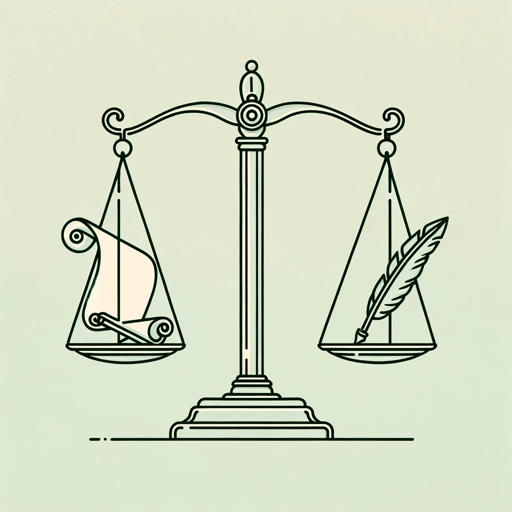
An Essay on Criticism
Alexander Pope

Eloisa to Abelard

The Dunciad
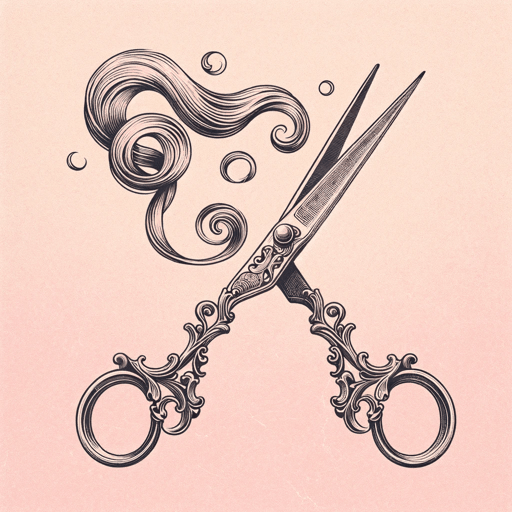
The Rape of the Lock
Featured Collections
Philosophy, Logic, & Ethics
View Collection
Religion & Spirituality
School Book List Titles
Valentine's Day Reads: The Theme of Love

IMAGES
VIDEO
COMMENTS
Alexander Pope's "An Essay on Criticism" seeks to lay down rules of good taste in poetry criticism, and in poetry itself. Structured as an essay in rhyming verse, it offers advice to the aspiring critic while satirizing amateurish criticism and poetry. The famous passage beginning "A little learning is a dangerous thing" advises would-be critics to learn their field in depth, warning that the ...
An Essay on Criticism (1711) was Pope's first independent work, published anonymously through an obscure bookseller [12-13]. Its implicit claim to authority is not based on a lifetime's creative work or a prestigious commission but, riskily, on the skill and argument of the poem alone. It offers a sort of master-class not only in doing….
Pope primarily used the heroic couplet, and his lines are immensely quotable; from "An Essay on Criticism" come famous phrases such as "To err is human; to forgive, divine," "A little learning is a dang'rous thing," and "For fools rush in where angels fear to tread.". After 1718 Pope lived on his five-acre property at ...
Alexander Pope was a prominent English poet and satirist who was born in 1688 and died in 1744. He published An Essay on Criticism in 1711, though the subtitle suggests that he wrote it earlier, and it is the work that made him famous and launched his career.The poem is largely written in heroic couplets and iambic pentameter and is a critique of the state of literary criticism in the early ...
An Essay on Criticism Summary " An Essay on Criticism" by Alexander Pope is a long, three-part poem about the nature of poetry and criticism. In the first part, the speaker of the poem describes ...
An Essay on Criticism. An Essay on Criticism is one of the first major poems written by the English writer Alexander Pope (1688-1744), published in 1711. It is the source of the famous quotations "To err is human; to forgive, divine", "A little learning is a dang'rous thing" (frequently misquoted as "A little knowledge is a dang'rous thing ...
Summary. "An Essay on Criticism" is a three-part poem in which Alexander Pope shares his thoughts on the proper rules and etiquette for critics. Critics assail Pope's work, his background, his religion, and his physical appearance throughout his career. Pope has a lot to say to critics about their common mistakes and how they could do their job ...
An Essay on Criticism, didactic poem in heroic couplets by Alexander Pope, first published anonymously in 1711 when the author was 22 years old.Although inspired by Horace's Ars poetica, this work of literary criticism borrowed from the writers of the Augustan Age.In it Pope set out poetic rules, a Neoclassical compendium of maxims, with a combination of ambitious argument and great ...
Alexander Pope 's long three-part poem "An Essay on Criticism" is largely influenced by ancient poets, classical models of art, and Pope's own Catholic beliefs. The poem revolves around ...
An Essay on Criticism: Part 1. By Alexander Pope. Si quid novisti rectius istis, Candidus imperti; si non, his utere mecum. [If you have come to know any precept more correct than these, share it with me, brilliant one; if not, use these with me] (Horace, Epistle I.6.67) PART 1. 'Tis hard to say, if greater want of skill.
An Essay on Criticism, frontispiece. Published in 1711, Alexander Pope 's poem An Essay on Criticism is a series of finely-wrought epigrams on the art of writing and one of the most quoted poems ...
An Essay on Criticism, published anonymously by Alexander Pope (1688-1744) in 1711, is perhaps the clearest statement of neoclassical principles in any language. In its broad outlines, it expresses a worldview which synthesizes elements of a Roman Catholic outlook with classical aesthetic principles and with deism. That Pope was born a Roman Catholic affected not…
Thanks for exploring this SuperSummary Study Guide of "An Essay on Criticism" by Alexander Pope. A modern alternative to SparkNotes and CliffsNotes, SuperSummary offers high-quality Study Guides with detailed chapter summaries and analysis of major themes, characters, and more.
Alexander Pope's Essay on Criticism was written by him in 1709 when he was barely twenty years old, and published in 1711.. E on C has become a landmark of criticism in English Literature for two ...
Overview. Alexander Pope wrote An Essay on Criticism shortly after turning 21 years old in 1711. While remaining the speaker within his own poem Pope is able to present his true viewpoints on writing styles both as they are and how he feels they should be. While his poetic essay, written in heroic couplets, may not have obtained the same status ...
Thanks for exploring this SuperSummary Study Guide of "An Essay on Criticism" by Alexander Pope. A modern alternative to SparkNotes and CliffsNotes, SuperSummary offers high-quality Study Guides with detailed chapter summaries and analysis of major themes, characters, and more.
The Principles of Artistic Greatness. Alexander Pope's "An Essay on Criticism" partially functions as a treatise on the aesthetic ideals of the neoclassical period in English literature.
An Essay On Criticism captures the essence of Alexander Pope's profound understanding of literary criticism in a masterful and thought-provoking manner. From the very beginning, Pope captivates the reader with his witty and eloquent writing style, compelling them to delve deeper into the realm of literary analysis. In this essay, Pope embarks ...
15 by Alexander Pope. An Essay on Criticism by Alexander Pope. Read now or download (free!) Choose how to read this book Url Size; Read online (web) ... An Essay on Criticism Credits: Produced by Ted Garvin, David Garcia and the Online Distributed Proofreading Team. Language: English:
An Essay on Criticism: Part 2. By Alexander Pope. Of all the causes which conspire to blind. Man's erring judgment, and misguide the mind, What the weak head with strongest bias rules, Is pride, the never-failing vice of fools. Whatever Nature has in worth denied, She gives in large recruits of needful pride; For as in bodies, thus in souls, we ...
The work that more than any other popularized the optimistic philosophy, not only in England but throughout Europe, was Alexander Pope's Essay on Man (1733-34), a rationalistic effort to justify the ways of God to man philosophically.As has been stated in the introduction, Voltaire had become well acquainted with the English poet during his stay of more than two years in England, and the two ...
The "Essay on Criticism" consists of some 746 lines written in heroic couplets, i.e. iambic pentameter lines rhymed aa, bb, cc, etc. To do a line by line analysis, you may wish to use an annotated ...
Alexander Pope is the author of "An Essay on Man," published in 1734. Pope was an English poet of the Augustan Age, the literary era in the first half of the 18th century in England (1700-1740s). Neoclassicism, a literary movement in which writers and poets sought inspiration from the works of Virgil, Ovid, and Horace, influenced the poem.